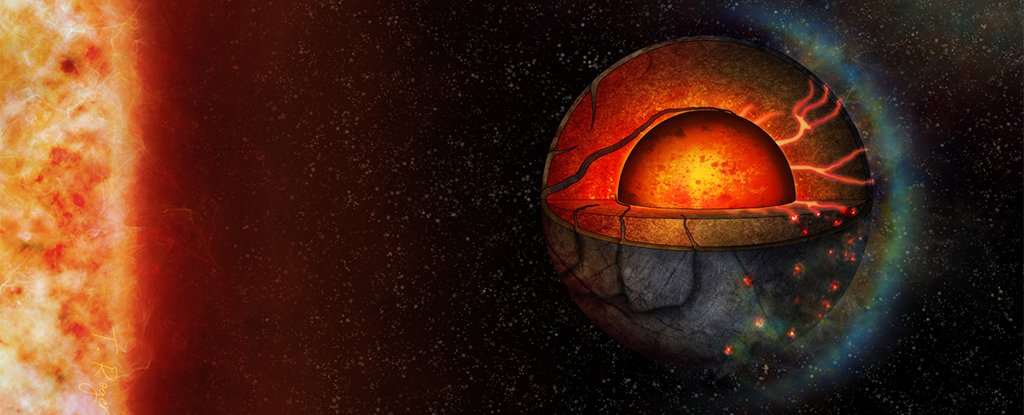
That evidence is a set of advanced simulations based on observations of the rocky planet LHS 3844b, which is slightly larger than Earth. Importantly for this particular piece of research, it doesn’t look as though the exoplanet has an atmosphere.
That leaves half of LHS 3844b permanently exposed to its sun and could mean temperatures of up to roughly 800 degrees Celsius (1,472 degrees Fahrenheit) on the ‘daytime’ side, and about minus 250 degrees Celsius (minus 418 degrees Fahrenheit) on the ‘night-time’ side.”We thought that this severe temperature contrast might affect material flow in the planet’s interior,” says astronomer Tobias Meier, from the University of Bern in Switzerland.
Based on phase curve observations of the planet’s brightness and possible temperatures, and computer models simulating various possible tectonic materials and heat sources, Meier and his colleagues think a hemisphere-scale flow of subsurface material is happening.
Most of the simulations the researchers ran showed only upwards flow on one side of the planet and only downwards flow on the other, but in some scenarios that was reversed – a surprising find, and one that doesn’t match tectonic movement on Earth.
“Based on what we are used to from Earth, you would expect the material on the hot dayside to be lighter and therefore flow upwards and vice versa”, says geophysicist Dan Bower, from the University of Bern
The underlying reason is the changing temperature of the mantle material as it moves, with colder rock stiffening up and becoming less mobile, and warmer rock becoming much more liquid-like as it heats up. The scientists say that shifting surface and material could lead to some rather incredible tectonic activity.
“On whichever side of the planet the material flows upwards, one would expect a large amount of volcanism on that particular side,” says Bower.
As a result, scientists suggest that LHS 3844b could have one entire hemisphere covered in volcanoes, while the other side shows hardly any volcanic activity – all because of the intense temperature contrast around the planet.
The sort of upwelling that would cause these volcanoes does match what we see on Earth, but only in specific places, such as Hawaii and Iceland. In more general terms, the tectonic movement that these models suggest is unlike anything in our Solar System.
As more powerful space telescopes come online and our understanding of exoplanets improves, further observations and research should help confirm what’s happening across the surface of LHS 3844b – and whether it really is half covered in volcanoes.
“Our simulations show how such patterns could manifest, but it would require more detailed observations to verify,” says Meier.
“For example, with a higher-resolution map of surface temperature that could point to enhanced outgassing from volcanism, or detection of volcanic gases. This is something we hope future research will help us to understand.” https://www.sciencealert.com/astronomers-have-found-the-first-evidence-for-tectonic-activity-on-an-exoplanet







Recent Comments